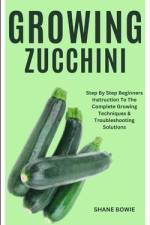- Step By Step Beginners Instruction To The Complete Growing Techniques & Troubleshooting Solutions
av Shane Bowie
149,-
The lychee fruit, sometimes written "litchi," is a tropical fruit that originated in the Chinese provinces of Guangdong and Fujian. Scientifically, it is Litchi chinensis, and it is a member of the Sapindaceae family, which includes soapberries. Juicy flesh, bright red or pink peel, and a sweet, aromatic taste make this fruit very desirable.In particular, lychee fruit is known for its: - Lychees have a small, spherical shape and a rough, bumpy skin. Once mature, the fruit's skin will be a vibrant shade of pink or red, and it will peel right off to expose the luscious, translucent meat within.- The texture of lychee flesh is comparable to that of grapes; it is both juicy and gelatinous. All it does is encircle one big seed.- Taste: Lychees are sweet and fragrant, with a flavor profile that combines fruity, floral, and rose undertones.- Lychee is rich in antioxidants, copper, folate, niacin, riboflavin, potassium, phosphorus, magnesium, and manganese, among other nutrients.- Typical culinary uses for lychees include snacking on them fresh or using them as a dessert. Salads, fruit cocktails, sorbets, and a host of Asian meals can all benefit from their use. You might find lychee flavor in certain sauces, ice creams, and drinks.- Harvest Time: The best time to harvest lychee fruits is in the summer.Keep in mind that lychees are best consumed when they are still somewhat fresh because of their limited shelf life. Parts of the Americas, Australia, Asia, and Africa are among the many tropical and subtropical zones on Earth where the fruit is extensively farmed.






























